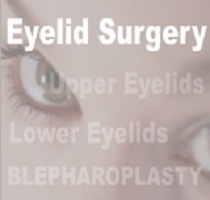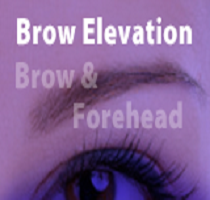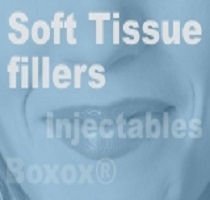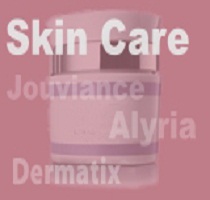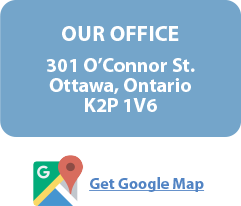Volume 10 • Issue 1
Damaging Effect Of Sun On Our Skin

by David R. Jordan
M.D., F.A.C.S., F.R.C.S.(C)
INTRODUCTION
Skin cancer is the most frequently occurring neoplasm among adults. The head and neck exposed areas are common sites for skin cancer to occur. Ultra Violet-B (UVB) rays from the sun are the main sunrays that cause skin cancer. Adequate sun protection with a sunscreen that blocks UVB rays is a helpful preventative measure against skin cancer.
Wrinkle reduction through Botox injections, rejuvenative creams (Retin-A, Vitamin C, Kinerase, etc.) as well as soft tissue fillers (Restylane, Artecoll, collagen injections, etc.) are the number one cosmetic procedure throughout North America.
At this time Ultra Violet-A (UVA) rays from the sun (often called “tanning” rays) are the main sunrays that cause “aging and wrinkle changes”. For those interested in looking less wrink led, younger, and healthier it is wise to wear a sunblocker that protects against UVA rays as well as UVB rays. It has only been in recent years that companies manufacturing sunblockers are starting to list their UVA protecting abilities in addition to their UVB blocking abilities on the front of their product.
Sunscreens and Sun Protection
The first step to treat photodamaged (sun damaged) skin is to stop ongoing photodamage. It makes little sense to spend a lot of time and money to improve the quality of skin with cosmetic procedures and then subject it to further damage from chronic ultraviolet (UV) light exposure. Studies have shown that complete avoidance of sunlight for several years can actually reverse some photodamage – in other words your skin has the ability to repair itself if it is protected from continual photodamage. The sun delivers three main types of Ultra Violet rays: UVA, UVB, and UVC. UVB is the main ray that causes skin cancer. UVA (often called “tanning” rays) however, cause most of the aging and wrinkle changes. UVA rays may penetrate more deeply into the skin than UVB light and tends to stimulate freckle and pigment spot formation. UVA causes long-term damage that may not appear for years. UVA exists, rain or shine, 365 days per year. UVC rays are potent carcinogens but are usually filtered by the ozone layer. Most sunscreens until recently are only rated for UVB protection. A product can offer 98% UVB protection and as little as 1%UVA protection and still be classified as “Broad Spectrum”. Makeup offers very little UVA protection. Thus, the SPF number has no relation to the amount of UVA or wrinkle protection.
Sunscreens:
Sunscreens should be worn everyday –whether you plan to be outdoors for a short or an extended period of time. Because UV damage is cumulative in its effects, the prevention of even small amounts of daily sun damage over a long period of time can have a profound impact on the total amount of UV damage to the skin.
Sunscreens can be broken down into two types – physical block and chemical blocks. Physical blocks actually create a physical barrier to the penetration of UV light into the skin. The classic physical block is zinc oxide or titanium dioxide – long popular with lifeguards to protect their noses and lips. Recently these products are prepared in a “micronized” form, which makes it almost transparent except for a fine milky shiny film. They should not be used on open wounds (following skin resurfacing) because of systemic absorption. These lotions must be applied rather thickly to work best.
Examples:
– Banana Boat – Ultra Plus Sunblock, Spray Lotion (titanium dioxide)
– Banana Boat Baby Block SPF 30/50 (titanium dioxide) Hawaiian Tropic 30/50 (titanium dioxide)
– Sea and Skin 50 (zinc oxide)
– Ombrelle (L’Oréal) 30, 45, 60 (titanium dioxide and Parsol 1789)
(There are many others as well – read the labels to be sure)
Chemical sunscreens rely on the absorption of UV light by the active sunscreen chemical. PABA was formerly the most common agent, but because of high rate of allergy and its inability to block UVA light, it has been replaced by other agents such as oxybenzone and methoxycinnate, which only partly screen out UVA rays.
Examples:
– Coppertone Water Babies 30/45 – PABA free, (oxybenzone)
– Coppertone UVA/UVB Gel (oxybenzone)
– Coppertone UVA/UVB 30 – PABA free, (oxybenzone)
– Panama Jack 15/30/45 – UVA, UVB protection, PABA free, (oxybenzone)
– Banana Boat SPF 50, PABA free, (methoxycinnate)
– NO-AD® 15/30/45 – UVA, UVB pro
(There are many others as well – read the labels to be sure)
As mentioned, only in recent years is the UVA protection mentioned on the product. At this time, Parsol 1789 (avobenzone) is the most specific UVA blocking agent in this country. Other chemicals, anthranilates and benzophenones are effective but not to the same degree as Parsol 1789. However, products containing Parsol 1789 degrade in the sun with time and may affect the other active ingredients (methoxycinnate) causing them to lose their protective properties. Thus, re-application during extended periods in the sun is a good idea to be sure your skin stays protected. Several products are currently available that have Parsol 1789.
Products that contain Parsol 1789 –
Examples:
– Neutrogena SPF 45 UVA Sunblock with Parsol 1789
– Ombrelle by L’Oréal SPF 30/50/60 UVA/UVB protection with Parsol 1789 (also titanium dioxide)
– Anthélios “L” 60 UVA/UVB protection (has Parsol 1789 and titanium dioxide)
– Coppertone UVA/UVB 70 Gel with Parsol 1789
(There are many others as well – read the labels to be sure)
Remember, do not let sunscreen lull you into a false sense of security and ignore other means of avoiding exposure such as hats, clothing, and avoidance.
Application of Sunscreens:
-
Apply daily to exposed areas: face, neck, chest, back of hands, top of ears and top of feet.
-
Apply in front of a mirror with glasses off to make sure you go all the way up to the lower eyelashes and don’t miss areas of the face.
-
You can avoid the upper eyelids if you are anticipating perspiring (which can sting the eyes), but you should compensate by wearing ultraviolet glasses or a hat.
-
Most people apply only one-half the amount of sunscreen (1 mg/cm2) used by researchers when testing the SPF rating of a sunscreen (2 mg/cm2).Therefore, you should apply your sunscreen more thickly than normal for the best protection.
-
For extra protection apply a moisture-based broad-spectrum chemical sunscreen (at least SPF 15 or higher) and then 20 to 30 minutes later apply a chemical-free sunscreen (titanium dioxide) if you are going to be subjected to extreme amounts of sun exposure such as a day at the beach, on a sailboat, etc. The double layer gives you the benefit of both a chemical and a physical sunscreen agent.
Medicine Effects: Certain drugs, even some colognes, can make your skin more sensitive to UV rays. If you must use the products listed below while exposed to excessive sunlight, be extra-liberal with the sunblock or use the extra-protection trick (above).
- aftershaves with musk scents.
- diuretics like Diuril, Hygroton, and Oretic
- diuretics like Diuril, Hygroton, and Oretic
- painkillers such as Ibuprofen and Naproxen.
- antihistamines such as Benadryl, Tavist-1, Actifed,
- and Chlortimeton.
Hats:
Pick a hat you will feel comfortable wearing because if you feel foolish in it you probably won’t wear it. A broad brim hat is the best for protection. Try to find a hat with a dark, non reflective undersurface under the brim. This keeps ultraviolet rays from reflecting off pavement, grass, or white beach sand to the underside of your hat and then ricocheting into the eyes.
Sunglasses:
Like hats, the bigger the better. A broad-spectrum total UVA, UVB block is preferred. The tint of the sunglasses has no relationship to the amount of UV blockage. Wrap around or side panels are preferable to small spectacles because of the added protection to the outside portion of the eyes.
If you have any questions regarding the topics of this newsletter, or requests for future topics of InSight, please contact Dr. David R. Jordan office by telephone at (613) 563-3800.


